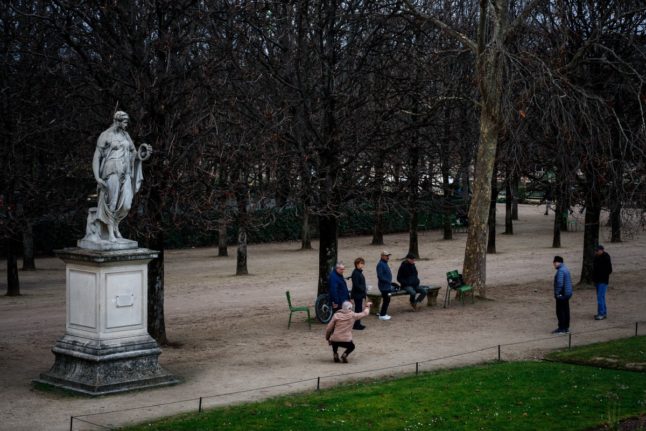1. Ancient Greek origins
Pétanque features fairly regularly on lists of stereotypical french activities and plenty of French people would have you believe that they invented the game.
But the origins of Pétanque (or boules) can be traced as far back as Ancient Greece when people played games which involved tossing coins and stones.
The Ancient Romans then came up with the idea of adding a target – which in the French version of the game is called a cochonnet (piglet). As for the name Pétanque – which is also used in English – it comes from the word “la petanca” in Provençal dialect, deriving from pès tancats or “feet together”.
2. Not just a sport for old men
The heartland of the sport is southern France, particularly Provence, and the popular image is of elderly men playing it.
And while plenty of retired men enjoy a game of Pétanque, possibly accompanied by a glass of Pastis, statistics show that more and more women and young people are taking part, with eight percent or registered players being under 18.
As of 2022, 51,000 (or 17 percent) of France’s over 250,000 registered pétanque players were women, according to Le Telegramme.
That figure has been on the rise, with an additional 12,000 women players between 2021 and 2022.
READ MORE: 10 signs spring has arrived in France
3. OK maybe some…
One of the best things about Pétanque is that practically anyone can play, regardless of sex or age.
Pétanque legend César Brauer known as ‘César of Montelimar’ won the first ever Pétanque World Cup in 1962 and 50 years later he competed in his last World Cup in 2013. He died two years later.
4. The rise of the “bouligans”
The term bouliganisme (boules hooliganism) was coined after numerous stories about rising incivility among French players.
In 2007, the newspaper Midi-Libre declared: “Pétanque is no longer a convivial sport. It is being undermined by constant incivility, verbal threats and gross insults. The non-respect of sporting rules by some players is driving others away, as well as referees who feel endangered.”
5. Dangerous sport
Pétanque may be regarded by many as a gentle pastime but it has been known to get out of hand.
In 2008 a man in the village of Adé in the Pyrenees was killed by a fellow player’s ball as he was checking how close his own was to the cochonnet. In another tragic accident – quite unrelated to the sport – a pensioner was trampled to death by a two-tonne runaway circus elephant as he played the game.
Meanwhile, in 2023, a 31-year-old man was killed by the explosion of a pétanque ball that he had forgotten on his barbecue, in the Pyrénées-Orientales département.
6. Don’t be a Fanny
If you’ve ever played Pétanque in Provence you may have wondered what a picture of a bare-bottomed woman called “Fanny” is doing there.
She is basically the goddess of Pétanque and tradition dictates that if a team fails to score a single point they must kiss Fanny’s bottom.
So if you happen to be hopeless at the sport, don’t be surprised if your competitors exclaim: “Il est Fanny!” (he’s Fanny) or “Fanny paie à boire!” (Fanny pays for the drinks).
7. International fans
Pétanque may be culturally associated with France but the International Federation of Pétanque and Provençal Game says they have over 800,000 licenced players worldwide.
The sport has become especially popular in Asia, and in 2023, Thailand took home the gold during the Pétanque World Championships.
8. A bac in Pétanque?
As one of France’s favourite sports, it’s perhaps unsurprising that pétanque has crept its way into the French school system. A handful of high schools in the Provence-Alpes-Côte d’Azur region now offer it as a sport for the Physical Education baccalauréat qualification.
9. Alcohol ban lifted
In 2007 the World Anti-Doping Agency, which fights against drugs in sport, finally responded to calls from French players of Pétanque to lift its draconian ban on alcohol for professional players.
At the time, the president of the World Boules Federation, Romolo Rizzoli, ridiculed the inclusion of alcohol on the list of banned substances for pétanque, complaining to the French press: “You can drive a car after drinking two glasses of wine, but you can’t play boules?” according to Der Spiegel.
Boules players still have a long list of substances they are barred from taking, including cocaine, steroids, hashish and growth hormones.
10. Olympic ambitions
A gentle pastime, you say? Well, don’t say that to the World Federation of the Sport of Boules. Founded in 1985 by three international boules organisations, the federation has fought for decades to get the game recognised as an Olympic sport.
With Paris hosting the 2024 Olympic Games, it would have been a perfect time for this most French of traditions to finally be awarded the status that it craves. Alas, it was not to be and the Olympic Games Organising Committee declared in 2019 that Pétanque had failed in its bid to become an Olympic event.
Instead breakdancing, skateboarding, climbing and surfing will be the new sports on view in Paris in 2024.
READ MORE: Hotels, tickets and scams: What to know about visiting Paris for the 2024 Olympics



 Please whitelist us to continue reading.
Please whitelist us to continue reading.
Member comments